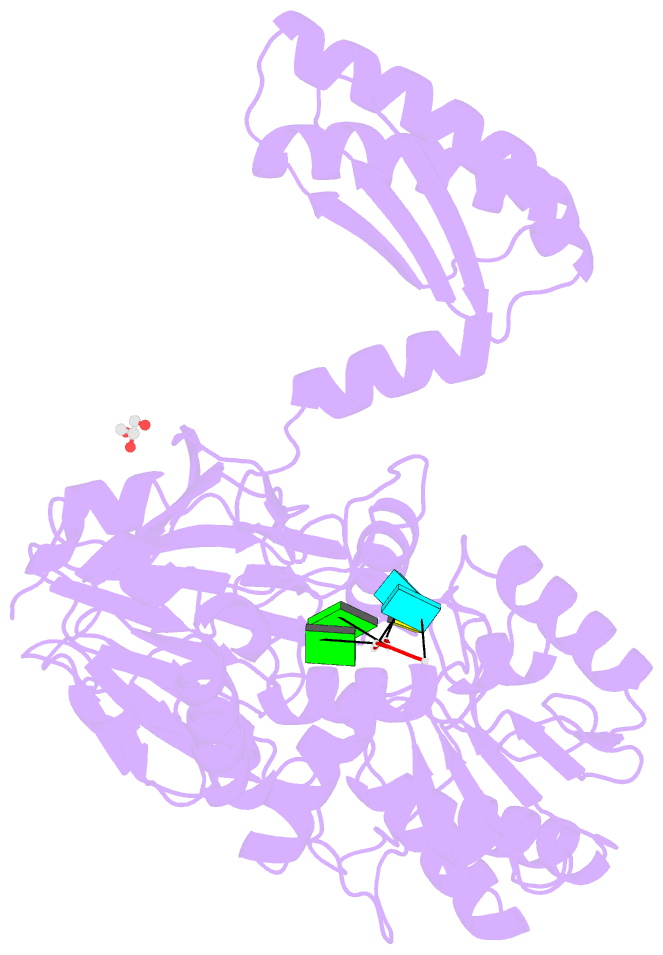Summary information and primary citation
- PDB-id
-
3t3o;
SNAP-derived features in text and
JSON formats
- Class
- hydrolase-RNA
- Method
- X-ray (2.5 Å)
- Summary
- Molecular basis for the recognition and cleavage of RNA
(cugg) by the bifunctional 5'-3' exo-endoribonuclease rnase
j
- Reference
-
Dorleans A, Li de la Sierra-Gallay I, Piton J, Zig L,
Gilet L, Putzer H, Condon C (2011): "Molecular
Basis for the Recognition and Cleavage of RNA by the
Bifunctional 5'-3' Exo/Endoribonuclease RNase J."
Structure, 19, 1252-1261. doi:
10.1016/j.str.2011.06.018.
- Abstract
- RNase J is a key member of the β-CASP family of
metallo-β-lactamases involved in the maturation and
turnover of RNAs in prokaryotes. The B. subtilis
enzyme possesses both 5'-3' exoribonucleolytic and
endonucleolytic activity, an unusual property for a
ribonuclease. Here, we present the crystal structure of
T. thermophilus RNase J bound to a 4 nucleotide RNA.
The structure reveals an RNA-binding channel that
illustrates how the enzyme functions in 5'-3'
exoribonucleolytic mode and how it can function as an
endonuclease. A second, negatively charged tunnel leads
from the active site, and is ideally located to evacuate
the cleaved nucleotide in 5'-3' exonucleolytic mode. We
show that B. subtilis RNase J1, which shows processive
behavior on long RNAs, behaves distributively for
substrates less than 5 nucleotides in length. We propose a
model involving the binding of the RNA to the surface of
the β-CASP domain to explain the enzyme's processive
action.





